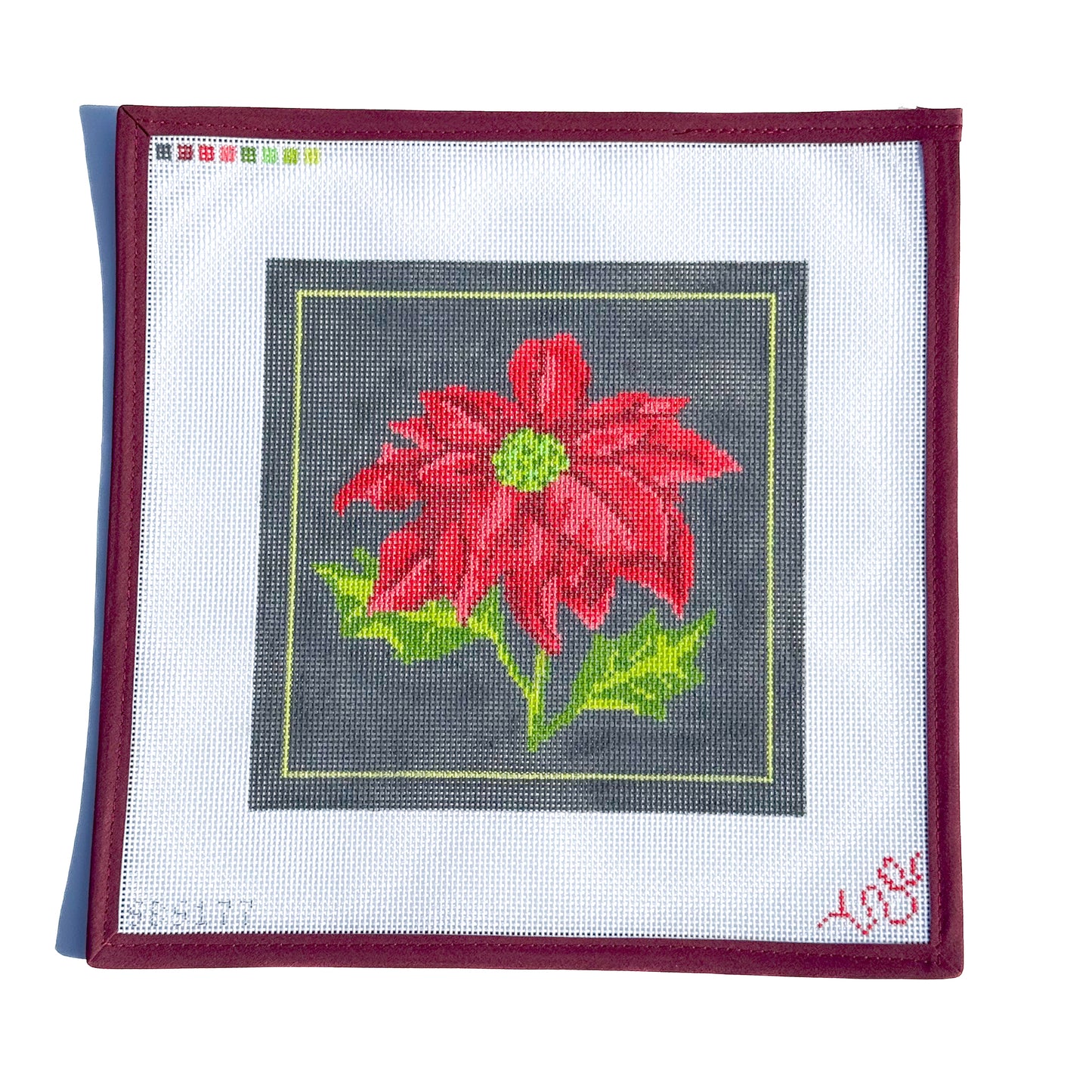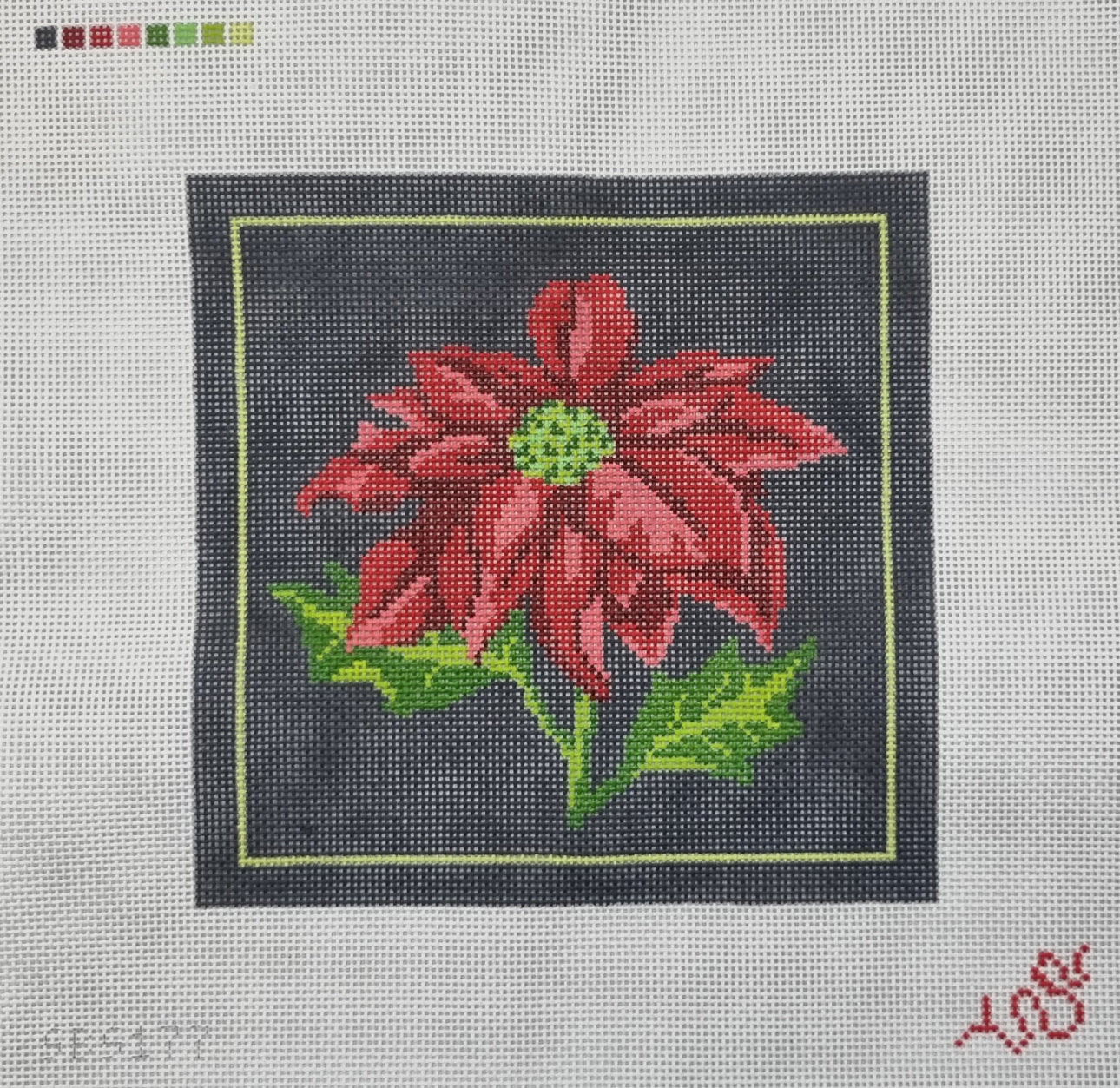Spellbound Stitchery
Dark Floral Poinsettia Needlepoint Canvas
Dark Floral Poinsettia Needlepoint Canvas
Couldn't load pickup availability
This needlepoint canvas is intentionally printed GRAY, to make stitching with BLACK threads a breeze! Design is 8x8" on 13 mesh, total canvas width and height is 12x12".
Here is the Poinsettia, also known as cuetlaxochitl, or Euphorbia pulcherrima. An exceedingly popular plant during the Christmas holidays due to its bright red and green leaves, Poinsettias are native to Mexico, and they are a warm-weather shrub. The original Nahuatl name for the plant we call “poinsettia” is cuetlaxochitl (kwet-la-sho-she), cultivated by the Aztecs long before the European colonization of the Americas. The Aztecs used cuetlaxochitl for a variety of purposes, including decoration and the production of red and purple dyes, as well as for medicines derived from the plant’s milky white sap.
The timing of the annual bloom for wild cuetlaxochitl began the plant’s association with the Christmas season during the 16th century, when missionaries spread the Catholic faith through the indigenous communities of Mexico. In the southwestern Mexican city of Taxco, Franciscan friars used the plant to decorate Nativity scenes. Local legend tells of a young poor girl named Pepita, who was on her way to church on Christmas Eve. Realizing she had forgotten an offering, Pepita gathered a humble bouquet of roadside weeds as a gift for the newborn Jesus. When Pepita placed the bouquet at the base of the altar, the weeds burst into the colorful blooms of the cuetlaxochitl. The plant subsequently came to be called la flor de Nochebuena, literally “the Christmas Eve flower,” or simply “the Christmas flower.”
In 1828, cuetlaxochitl was taken from its native home and brought to the United States by Joel Roberts Poinsett, the U.S. Ambassador to Mexico. After successfully cultivating the unique plant in his South Carolina greenhouse, Poinsett began sharing the plant with friends and colleagues who marveled at the plant’s colorful transformation during the holiday season. A nursery owner in Pennsylvania named Robert Buist was the first to sell the plant to the public under its botanical name, Euphorbia pulcherrima. However, less than a decade after being introduced to the United States, cuetlaxochitl came to be known by its most enduring name: poinsettia, after the man who first appropriated the plant from Mexico. Poinsett is celebrated for introducing the poinsettia to the United States and for co-founding the Smithsonian Institution. However, his legacy as a slave owner and his role in the displacement of countless Native Americans has led some people today to reject the name “poinsettia” in favor of the plant’s Native name, cuetlaxochitl.
Though they have a bad rap, poinsettia Euphorbia pulcherrima plants are only mildly toxic to cats and dogs. The milky white sap found in poinsettias contains chemicals called diterpenoid euphorbol esters and saponin-like detergents.
Stitchperfect Printed.
Share




